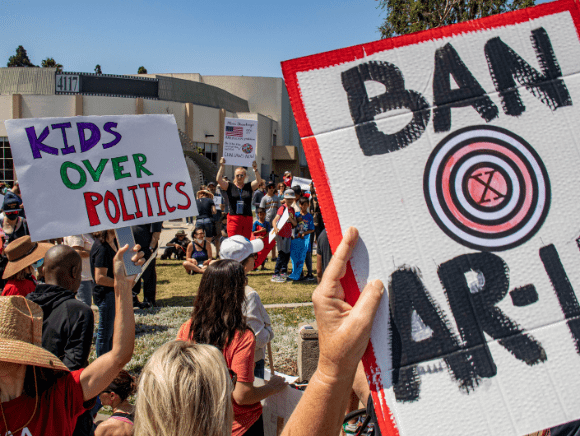Hoping to achieve something that might appease their voting base before they leave Washington, DC, for the summer recess, House Democrats fast-tracked a vote on a bill that would represent a significant setback to Second Amendment rights. This proposed assault weapons ban hit the House floor, thanks to House Speaker Nancy Pelosi (D-CA), on Friday, July 29, and was passed by the slimmest of majorities, 217-213. The bill is unlikely to get past an equally divided Senate in which Democrats must corral 10 Republican votes plus the full support of their own caucus. The reality is that Pelosi and her party had no mandate to ban semi-automatic rifles – but they probably assume it will give them something over which they can wax poetic as the midterm elections approach.
[substack align=”right”]Republican Reps. Brian Fitzpatrick of Pennsylvania and Chris Jacobs of New York were the only members of their party to vote for the bill, while five Democrats voted no: Henry Cuellar and Vicente Gonzalez of Texas, Kurt Schrader (D-OR), Ron Kind (D-WI), and Jared Golden (D-ME).
A House and Nation Divided
The close vote may reflect the division among American voters over the prospect of an assault weapons ban. A June Quinnipiac poll showed strong support for various measures that would tighten firearms restrictions – even among Republican voters – but a ban on the type of semi-automatic rifles the anti-gun lobby describes as “assault weapons” met with less favor. Fifty percent of registered voters supported such a ban and 45% opposed it. Quinnipiac noted, “This is the lowest level of support among registered voters for a nationwide ban on the sale of assault weapons since February 2013 when the question was first asked by the Quinnipiac University Poll.”
Among other things, the bill, which amends title 18 of the United States Code, makes it “unlawful for a person to import, sell, manufacture, transfer, or possess, in or affecting interstate or foreign commerce, a semiautomatic assault weapon.” The same applies to “a large capacity ammunition feeding device” – that is, so-called “high-capacity” magazines.
The ban does not apply “to the possession, sale, or transfer of any semiautomatic assault weapon otherwise lawfully possessed under Federal law on the date of enactment of the Assault Weapons Ban of 2022.” In other words, firearms that would otherwise be prohibited under this bill – and there is a staggering array of them – are grandfathered in if already owned when the law, hypothetically, goes into effect. The same is true of “high-capacity” magazines.
Assuming this bill fails in the Senate, which seems all but certain, Democrats have set themselves up to carry the usual talking points into their midterm election campaigns. They will hope, no doubt, to use the impending defeat of the assault weapons ban in the same way they aspire to manipulate the recent striking down of Roe v. Wade by the Supreme Court. It will become a messaging battle, as well as a useful deflection from rising inflation, soaring grocery bills, and the price of gas – which is still considerably higher than 18 months ago, even with the recent modest decline.
How the 1994 Assault Weapons Ban Failed
The usual anti-gun soundbites still come up short against the facts and figures. While it is widely claimed that the 1994 assault weapons ban drastically reduced the number of mass shootings in America, it had no discernible effect on the overall homicide rate. For example, according to figures compiled by Statista, the homicide rate per 100,000 people was 8.3 in 1995. That was down from the 1990 rate, and it dropped again to 5.9 in 2000 but spiked at 7.1 in 2001 and remained higher than the 2000 rate until the year 2003. When the ban expired in 2004, the murder rate increased for the next two years but then steadily declined until 2014.
In each year from 1994 to 2004 – the length of the last assault weapons ban – the US homicide rate was equal to or higher than the annual rates for the years 2008 to 2015. The conclusion? If reducing the number of mass shootings was the goal, then the ban may have had some measurable effect but if the aim was to save lives, it was, overall, a failure.
One other important point the anti-gun lobby deliberately ignores or perhaps doesn’t understand is that demanding the US rids itself of privately owned “weapons of war” – and very few citizens have access to military-grade weapons – is incongruous with the “well-regulated militia” part of the Second Amendment. What Democrats call “assault rifles” are in fact the very weapons most protected by the Second Amendment. They are the closest things to “weapons of war” US citizens are allowed to possess – and, thus, are the firearms most required to ensure “the security of a free state.”





